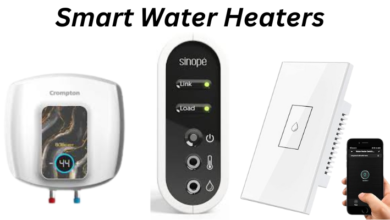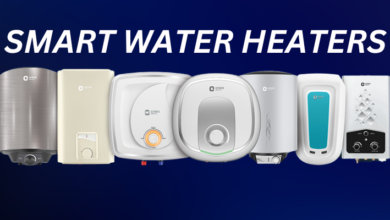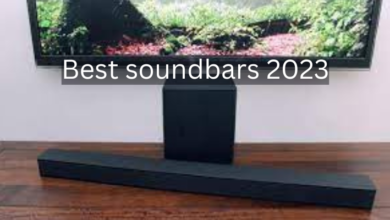Virtual Reality Headsets_ The Future of Learning, Entertainment, and More
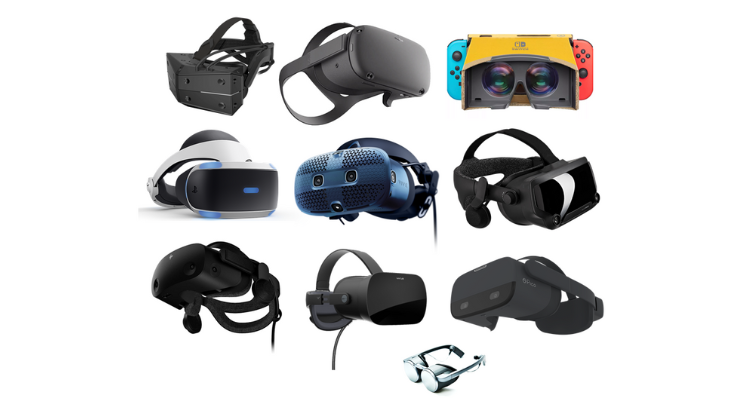
Headsets for virtual reality (VR) allow you to enter and navigate through fully immersive virtual environments. They are become more and more well-liked since they have so many advantages, such as:
- Possibilities for education: Virtual reality headsets can be utilized for educational activities like virtually seeing historical locations or going on field excursions.
- VR headsets provide a vast array of gaming and entertainment options, including racing games, first-person shooters, and social interactions.
- Fitness and wellness: Using VR headgear for activities like yoga in a virtual setting or VR exercise games can promote fitness and wellness.
Table of Contents
ToggleWhat is a VR headset?
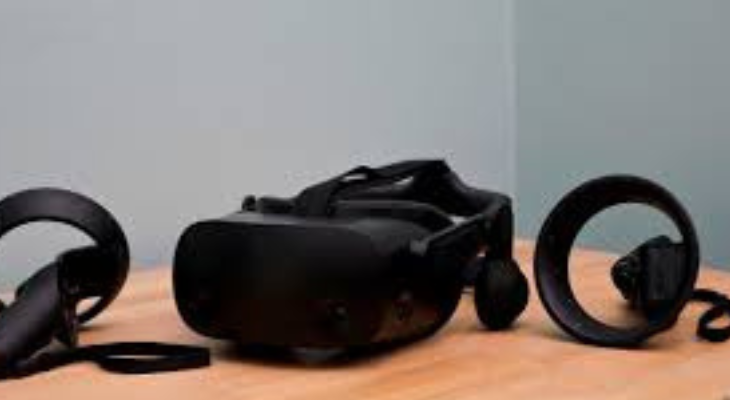
A virtual reality headset is a gadget that projects stereoscopic pictures onto the wearer’s eyes to produce a virtual reality experience. A display screen, a head-mounted display (HMD), tracking sensors, and controls are the standard components of virtual reality headsets. Usually, the display screen is split in half, showing each eye a slightly distinct image in each half. As a result, the user gets the impression that they are inside the virtual environment and has depth.
The wearer’s head motions are tracked by tracking sensors, which allows the virtual environment to be updated accordingly. As a result, the wearer can explore the virtual world as if it were their actual surroundings. To engage with the virtual world and perform actions like shooting or picking up objects, controllers are utilized.
How does a VR headset work?
- Stereopsis is the method by which virtual reality headsets operate. Stereopsis is the brain’s ability to compare two slightly different images from each eye in order to experience depth. Your brain integrates the images from both of your eyes when you gaze at an object to produce a single, three-dimensional image.
- This same idea is used by VR headsets to give the impression of depth in a virtual setting. Every eye sees a slightly different image on each half of the divided display panel. The two views are then combined by the brain to produce a single, deep image.
- VR headsets include tracking sensors in addition to stereopsis to monitor head movements. In order to give the wearer the impression that they are actually moving around inside the virtual world, this enables the virtual environment to be updated accordingly.
- Another way to communicate with the virtual world is using controllers. In order to move objects or fire weapons in a virtual environment, controllers usually track the wearer’s hand movements.
Key Features to Consider
Take into account the following important aspects while selecting a VR headset:
- Display Resolution: Sharper, more detailed images are presented on a higher resolution display, which improves the visual experience as a whole.
- Field of View: You can see more of the virtual world and feel more immersed if your field of view is broader.
- Refresh Rate: Smoother, more fluid pictures with less motion blur and more comfort are guaranteed by a higher refresh rate.
- Tracking: For a VR experience to run smoothly, accurate tracking is essential. Lighthouse tracking employs external base stations for more accurate tracking, while inside-out tracking uses cameras on the headset to capture hand and head movements.
- Controllers: These let you communicate with the virtual world. Six degrees of freedom, or 6DOF, controllers offer more intuitive and natural interactions.
- Content: For sustained involvement, a large selection of games, activities, and apps is necessary.
- Comfort: A well-made headset should have adjustable straps, padding, and weight distribution to make it comfortable to wear for extended periods of time.
Comparison Table
Feature | Meta Quest 3 | HTC Vive Pro 2 | Valve Index | PlayStation VR2 |
Type | Standalone | PC-connected | PC-connected | Console |
Price | $299 | $1,399 | $999 | $549 |
Resolution | 1800×1920 per eye | 2448×1296 per eye | 1600×1440 per eye | 2000×2040 per eye |
Refresh rate | 120Hz | 120Hz | 144Hz | 90Hz |
Field of view | 120 degrees | 120 degrees | 130 degrees | 110 degrees |
Tracking | Inside-out | Inside-out | Lighthouse | Inside-out |
Controllers | 6DOF | 6DOF | Knuckles | 6DOF |
Games | Meta Quest Store, SideQuest | SteamVR | SteamVR | PlayStation Store |
Connectivity | Wi-Fi, Bluetooth | DisplayPort, HDMI | DisplayPort, HDMI | USB-C |
Benefits of using a VR headset
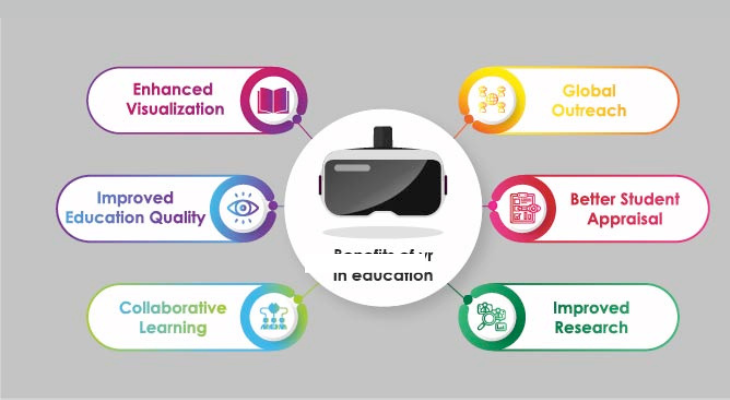
Using a virtual reality headset has several advantages. Among the most popular advantages are:
- Immersive experiences: VR headsets can create truly immersive experiences. Wearing a virtual reality headset gives you the impression that you are truly in the virtual environment. This can be a really potent and captivating encounter.
- Possibilities for education: VR headsets can be utilized in educational settings. For instance, students can study historical locations or go on virtual field trips using VR headsets.
- Entertainment and gaming: Virtual reality headsets provide a large selection of games and entertainment options. Virtual reality (VR) games include first-person shooters, racing games, and social experiences for players of different ages and interests.
- Fitness and well-being: Virtual reality headsets can be utilized for these objectives. For instance, you may get in shape with yoga sessions and virtual reality workout activities.
Virtual reality headsets are primarily of three types:
- Standalone VR headsets: These headsets can be used without a computer or gaming console. Although they are usually the least expensive choice, their capabilities might not be as strong as those of certain other VR headset models.
- VR headsets connected to a PC: These headsets need a strong PC to function. They are the most costly option, but they also provide the finest graphics quality and performance.
- VR headsets for consoles: To use these headsets, you need an Xbox Series X or PlayStation 5 console. They provide a decent trade-off between cost and functionality.
How to Select the Best VR Headset for You
There are a few things to think about while selecting a VR headset:
- Budget: Virtual reality headsets can cost anything from $200 and $1,000.
- Use case: How would you like to use the virtual reality headset? You will want a different headgear if your primary use for virtual reality is for gaming than if you want to use it for business or education.
- Features: A few VR headsets come equipped with haptic feedback, hand tracking, and eye tracking.
- Reviews: Before making a purchase, read reviews of various VR headsets. This will assist you in selecting the ideal headset for your requirements.
Best VR Headsets in 2023
The top VR goggles available in 2023 are as follows:
- Meta Quest 3: This stand-alone virtual reality headset provides an excellent trade-off between cost, functionality, and features. It features a large field of view, a comfortable design, and a high-resolution display.
- HTC Vive Pro 2: With the greatest performance and graphics quality available, the HTC Vive Pro 2 is a virtual reality headset that can be linked to a PC. It features a large field of view, a comfortable design, and a high-resolution display. That being said, it is also the priciest VR headset available.
- Valve Index: Offering outstanding performance and visual quality, the Valve Index is another VR headset that can be connected to a PC. In addition, it boasts a few special features including knuckle controllers for more organic hand tracking. But the Valve Index costs a lot of money and needs a strong PC to run.
- PlayStation VR2: Compatible with the PlayStation 5, the PlayStation VR2 is a console virtual reality headset. Its performance and price are well-balanced, and it comes with a sizable selection of PlayStation VR exclusive games.
VR Headset Setup
A virtual reality headset is usually easy to set up. To get started, refer to the instructions that came with your headset.
- VR Headset Troubleshooting
- There are several things you can attempt if your VR headset isn’t working properly:
- Verify that your PC or gaming console is correctly connected to the VR headset.
- Update the software on the VR goggles.
- Restart the console or computer.
- Try resetting the VR headset to factory defaults.
- For assistance, speak with the maker of the VR headset.
VR headset drawbacks:
Cost:
- Virtual reality headsets might set you back anything from $200 to $1,000. This may prevent some users from accessing them.
Expensive VR headset
- Motion sickness: When wearing VR headsets, some users may get motion sickness. This is a result of the VR headset’s continuous transmission of contradictory impulses to the brain. Although the world in virtual reality (VR) moves regardless of head movements, the brain is accustomed to seeing the world move in reaction to head motions. This may result in motion sickness symptoms as nausea and dizziness.
VR headset for motion sickness
- VR headsets: may potentially result in eye strain. This is due to the fact that using the VR headgear requires intense eye strain to focus on the screens. Headaches, impaired vision, and other signs of eye strain may result from this.
Eye strain VR headset
- Social isolation: Using a VR headset alone might be lonely. You are cut off from the outside world when you wear a virtual reality headset. Trying to connect with friends and family may become challenging as a result.
- Restricted material: The selection of VR headset content is still somewhat small. It could be challenging to find anything enjoyable to do as a result.
- Safety considerations: Virtual reality headsets raise several safety risks. For instance, there have been cases of users of VR headsets hurting themselves or falling over. It’s critical to use VR headsets safely and to pay attention to your surroundings.
- In general, virtual reality headsets remain a relatively young technology. While utilizing VR headsets has numerous advantages, there are some disadvantages as well. It’s possible that as technology advances, the disadvantages will decrease and the advantages will rise.
Conclusion
Although virtual reality headsets are still a relatively young technology, they have advanced significantly in recent years. Nowadays, a vast variety of VR headsets with a range of features and costs are on the market. Your needs, interests, and financial situation will determine which VR headset is best for you.
The Meta Quest 3 is an excellent choice if you’re searching for a stand-alone VR headset that’s reasonably priced and simple to operate. It features a large field of view, a comfortable design, and a high-resolution display. A huge collection of games and experiences is also included.
You will need a VR headset that is connected to a PC if you want the greatest possible VR experience. Among the top VR headsets for PC connections are the HTC Vive Pro 2 and the Valve Index. They come with ergonomic designs, large fields of vision, and high-resolution displays. They also offer strong features like haptic feedback and eye tracking.
FAQs
What is the difference between a standalone and PC-connected VR headset?
PC or console is not necessary for the operation of a stand-alone VR headset. Its graphics card and processor are independent. A strong PC is needed to run a VR headset that is PC-connected. The graphics and computing power for the VR experience are provided by the PC.
What is the difference between inside-out and lighthouse tracking?
Inside-out tracking tracks the wearer’s head and hands using cameras on the VR headset. Lighthouse tracking tracks the wearer’s head and hands by using base stations that produce infrared light.
What is 6DOF?
Six degrees of freedom is referred to as 6DOF. This indicates that the wearer’s head and hands can be tracked in all three dimensions by the VR headset: up, down, left, right, forward, backward, pitch, roll, and yaw.
What is the field of view?
A virtual reality headset’s field of view is the angle of view it can display. You will be able to see more of the virtual environment surrounding you if your field of vision is greater.
What is the refresh rate?
The frequency at which the virtual reality headset refreshes the image is known as the refresh rate. An image with a higher refresh rate will have greater fluidity and smoothness.
What is motion sickness?
A typical negative effect of VR headset use is motion sickness. It results from the brain receiving contradicting messages from the vestibular system and the eyes. The vestibular system senses movement in the physical environment while the eyes see a virtual one. Among other symptoms, nausea and vertigo may result from this.
How can I prevent motion sickness?
When using VR headsets, there are a few things you can do to avoid motion sickness. Start with shorter sessions, take frequent breaks, and don’t use VR headsets when you’re feeling under the weather or exhausted.


